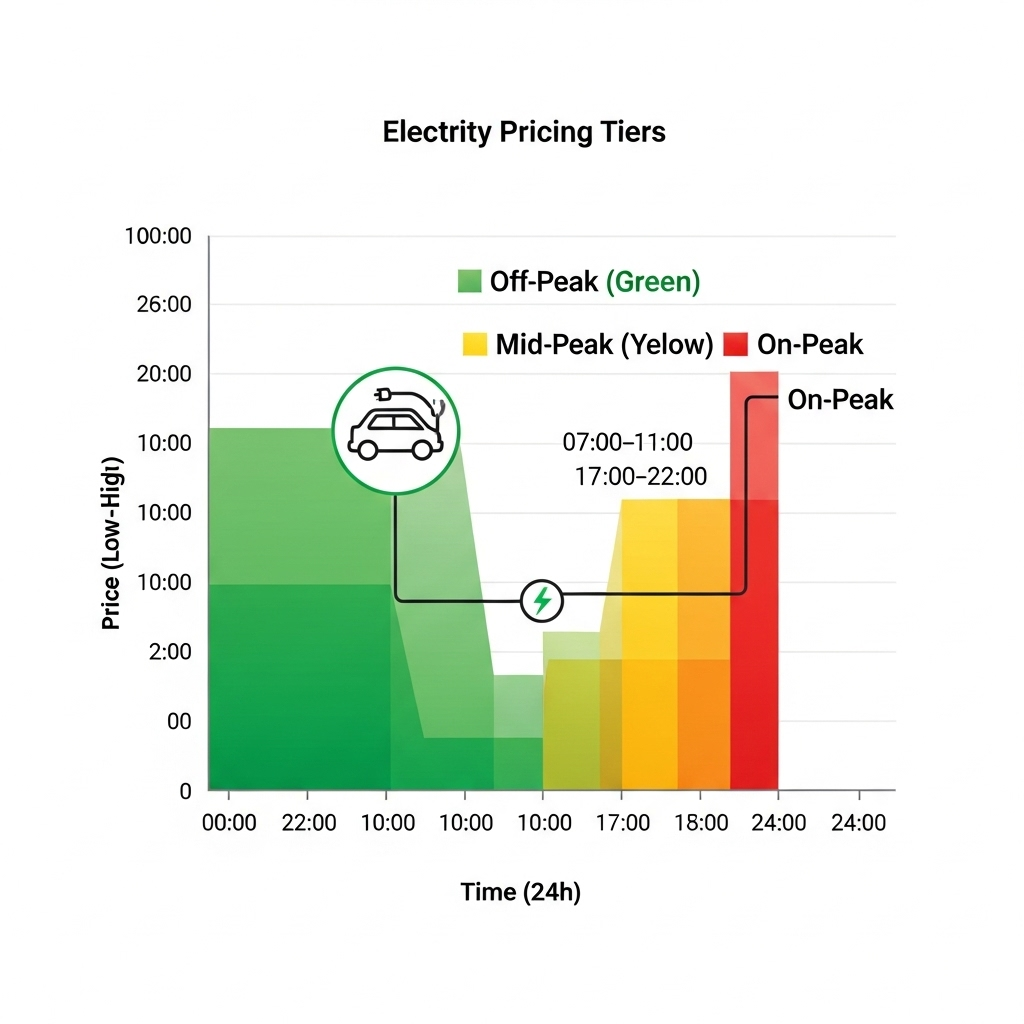Non-Wires Alternatives (NWAs) like solar arrays and battery energy storage systems are transforming distribution planning. Instead of building more poles and wires, utilities can use these distributed resources to enhance grid reliability and defer costly infrastructure upgrades. Yet, two of the most significant challenges slowing their adoption are permitting and interconnection. While often discussed together, they are distinct processes with unique requirements. Understanding the difference is crucial for developers, utilities, and policymakers aiming to build a more flexible grid.
Understanding the Permitting Maze for Non-Wires Alternatives
Permitting is the process of obtaining official approval from local, state, and sometimes federal authorities to construct and operate a project. For NWAs, this process can be particularly complex because these technologies often sit in a regulatory gray area, distinct from both large-scale power plants and simple rooftop solar installations.
Why is Permitting for NWAs Different?
Unlike traditional infrastructure projects that follow well-established procedures, NWAs often face inconsistent requirements across different jurisdictions. A battery storage system, for example, might be treated as an industrial facility in one town and a simple electrical appliance in another. This lack of standardization creates uncertainty, adds costs, and extends project timelines. The goal is to get all stakeholders to a common understanding of what is being built and to ensure it is safe for the community.
Key Permitting Hurdles and How to Address Them
The main obstacles in the NWA permitting process include navigating varied local building and fire codes, addressing safety concerns related to new technologies, and enduring long administrative review periods. A key recommendation from the International Energy Agency (IEA) in its Technology Roadmap for Solar Photovoltaic Energy is to 'streamline permitting and connecting, including permissions on buildings' and 'phase out unnecessary bureaucratic administrative processes that add costs and waiting time.' Adopting digital permitting platforms and creating clear guidelines for local authorities can significantly reduce these bottlenecks. By standardizing documentation and submission processes, developers can move projects forward more predictably.
The Role of Standardized Codes and Safety
Establishing clear, uniform standards is one of the most effective ways to simplify permitting. For energy storage systems, certifications like UL 9540 provide a comprehensive safety benchmark for system design and installation. When local authorities adopt these internationally recognized standards, it increases their confidence in the technology's performance and durability. This not only speeds up approvals but also ensures that NWA projects are deployed safely and reliably, building public trust and facilitating wider acceptance.
Navigating the Interconnection Process for Grid Integration
Interconnection is the technical and contractual process of connecting an NWA to the utility's electrical grid. If permitting is about permission to build, interconnection is about permission to connect and operate in sync with the grid. This process is fundamental to ensuring the stability and safety of the entire electricity network.
What is Interconnection and Why Does it Matter?
The interconnection process involves detailed engineering studies to analyze how an NWA will affect the grid's voltage, frequency, and overall stability. The utility must be certain that the new resource will not jeopardize reliability for existing customers. A successful interconnection agreement grants the NWA the right to export power and provides the framework for it to function as a grid asset, delivering services like peak shaving or voltage support. Without a sound interconnection agreement, an NWA is just an isolated power system with no ability to support the wider grid.
Technical Requirements for NWA Interconnection
Modern NWAs rely on sophisticated technology to integrate seamlessly with the grid. Smart inverters are critical, as they can autonomously adjust power output to help stabilize local grid conditions. These systems also require robust communication and control platforms to receive and respond to signals from the utility operator. For developers, proving the capability of their system is paramount. A deep understanding of key performance indicators, such as those outlined in this ultimate reference for solar storage performance, is vital for demonstrating a project's value during the interconnection study. This data helps utilities model the NWA's behavior and confirm its ability to function as a dependable grid resource.
Overcoming Interconnection Delays
Long queues and high costs for interconnection studies are notorious for delaying or even canceling viable NWA projects. To combat this, many regions are exploring new approaches. These include clustering multiple projects into a single study, providing developers with more transparent grid data to conduct their own initial assessments, and developing flexible interconnection agreements. These agreements can allow NWAs to connect faster with an initial limit on their output, which can be increased later as the utility completes further upgrades. This pragmatic approach gets resources online faster while managing grid impacts.
Aligning Policy and Regulation to Accelerate NWA Deployment
Streamlining permitting and interconnection requires more than just technical solutions; it demands a supportive policy and regulatory environment. As distributed resources become more prevalent, the very structure of utility operations and planning must evolve.
The Shift from DNO to DSO
Historically, utilities have operated as Distribution Network Operators (DNOs), managing a one-way flow of electricity to consumers. However, as the IEA notes in The Power of Transformation, 'The role of distribution is shifting away from a passive, one-way grid... towards a more complex structure, hosting generation facilities with two-way power flows.' This evolution to a Distribution System Operator (DSO) model involves actively managing these distributed resources to maintain grid balance. A DSO framework is essential for leveraging the full capabilities of NWAs.
Innovative Regulatory Frameworks
Regulation must also adapt to encourage NWA adoption. Traditional utility business models reward capital investment in new infrastructure, creating a bias against lower-cost NWA solutions. Performance-based regulation (PBR) can shift this dynamic by rewarding utilities for achieving specific outcomes, such as cost savings or improved reliability, regardless of the method used. Furthermore, as suggested in the IEA's China Power System Transformation report, regulators can help by 'requiring the submission of non-wire alternative plans' as part of any traditional infrastructure expansion proposal, ensuring these solutions receive fair consideration.
The Importance of Integrated Planning
Finally, effective NWA deployment requires looking beyond the electricity sector. The electrification of transportation, for instance, will place new demands on the grid that NWAs are uniquely positioned to meet. The IEA recommends that policymakers 'encourage integration of planning for transport and energy.' By coordinating with urban planners and transportation authorities, utilities can strategically deploy NWAs like battery storage at future electric bus depots or public charging hubs to manage demand and avoid expensive grid upgrades.
A Comparative Look: Permitting vs. Interconnection
To clarify the distinction, here is a side-by-side comparison of the two processes.
| Aspect | Permitting | Interconnection |
|---|---|---|
| Primary Goal | Ensure the project is built safely and complies with local codes (building, fire, environmental). | Ensure the project can connect and operate safely and reliably with the electric grid. |
| Key Stakeholders | Local government, planning departments, fire marshals, building inspectors. | Electric utility, grid operators, system engineers. |
| Core Focus | Physical construction, land use, public safety, and environmental impact. | Electrical engineering, grid stability, power quality, and communication protocols. |
| Typical Challenges | Inconsistent local regulations, long administrative delays, lack of standardized codes. | Long study queues, high costs for grid impact studies, outdated technical requirements. |
| Desired Outcome | A permit to construct and operate the physical facility. | A signed agreement to connect to the grid and exchange power. |
Looking Ahead: The Future of NWA Integration
Successfully navigating the permitting and interconnection processes is fundamental to unlocking the value of Non-Wires Alternatives. While permitting focuses on the 'permission to build' from local authorities, interconnection is about the 'permission to connect' from the utility. Both are critical, yet they involve different stakeholders, standards, and objectives. By standardizing codes, adopting more flexible regulatory frameworks, and fostering integrated planning, we can clear the path for NWAs. Doing so will help create a more resilient, efficient, and cost-effective energy system for everyone.
Disclaimer: This article is for informational purposes only and does not constitute legal or financial advice. You should consult with a professional for advice tailored to your specific situation.
Frequently Asked Questions
What is the average timeline for NWA permitting?
The timeline varies significantly based on location and project complexity. For smaller projects in jurisdictions with streamlined processes, it could take a few months. For larger, more complex systems like utility-scale batteries, the process can take a year or more due to detailed environmental reviews and public hearings.
Who pays for the grid studies required for interconnection?
Typically, the project developer is responsible for funding the interconnection studies conducted by the utility. These costs can range from a few thousand dollars for simple projects to hundreds of thousands for large systems requiring extensive grid analysis and modeling.
Can a single project require both a new permit and a new interconnection agreement?
Yes, almost every grid-connected NWA project requires both. Permitting grants the legal right to build the facility on a specific piece of land, while the interconnection agreement grants the technical and contractual right to connect it to the electrical grid. They are separate but parallel processes.
How do safety standards for lithium batteries affect the permitting process?
Safety standards, particularly for lithium-ion and LiFePO4 batteries, are a major focus during permitting. Fire marshals and building inspectors will verify that the system complies with standards like UL 9540 (for energy storage systems) and the National Electrical Code (NEC). Compliance is mandatory and demonstrates that the system has been rigorously tested to mitigate risks like thermal runaway.





Leave a comment
All comments are moderated before being published.
This site is protected by hCaptcha and the hCaptcha Privacy Policy and Terms of Service apply.